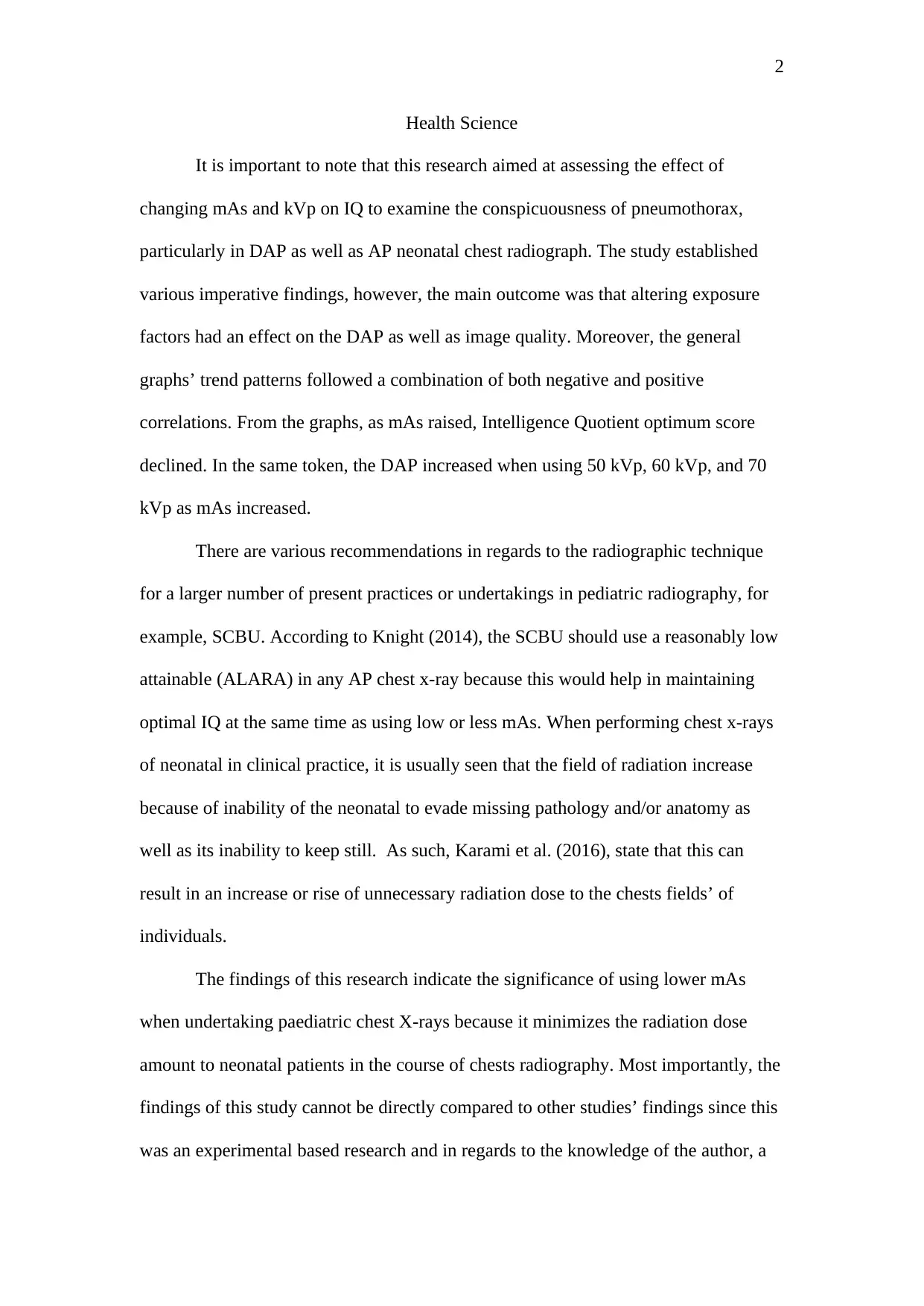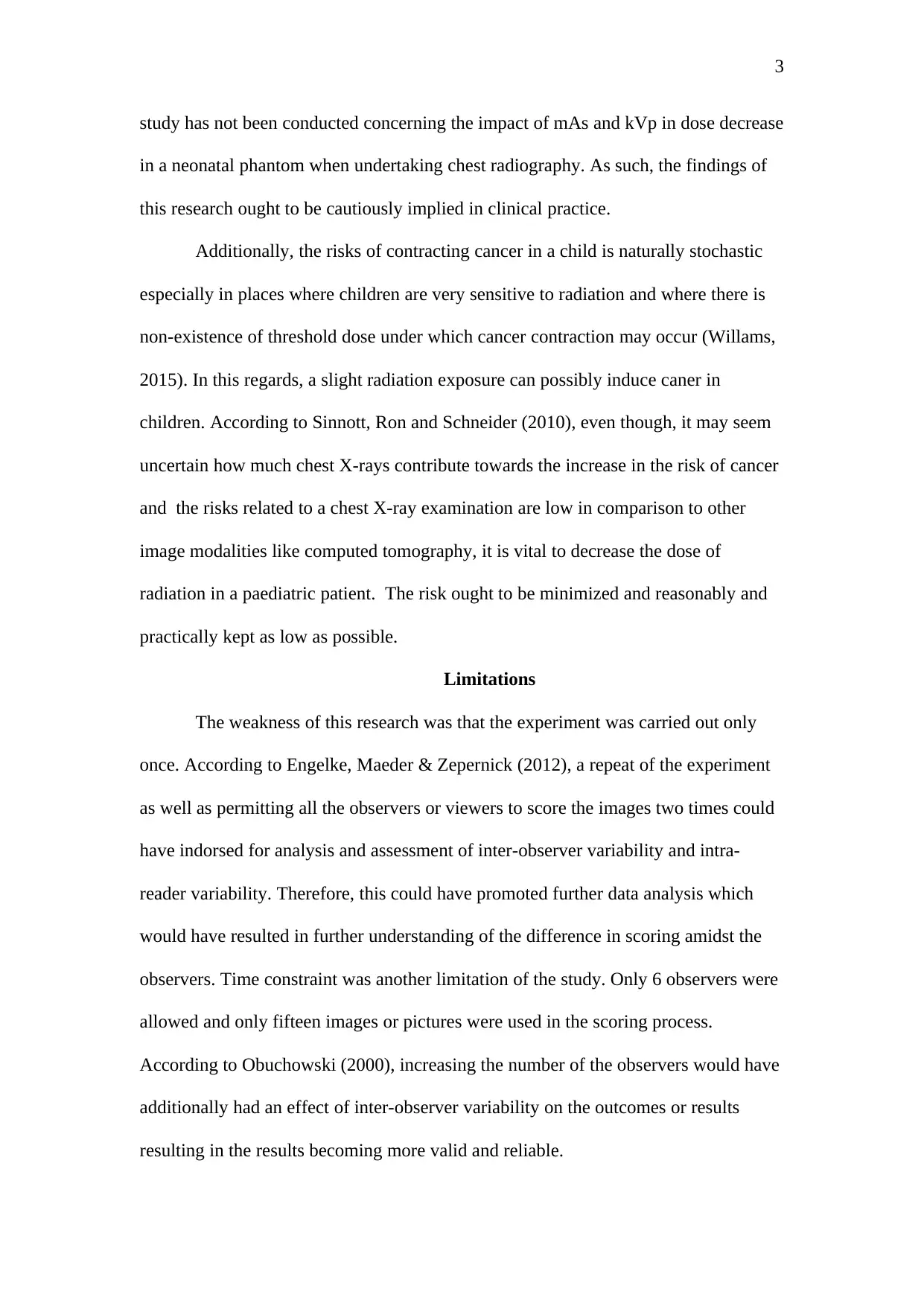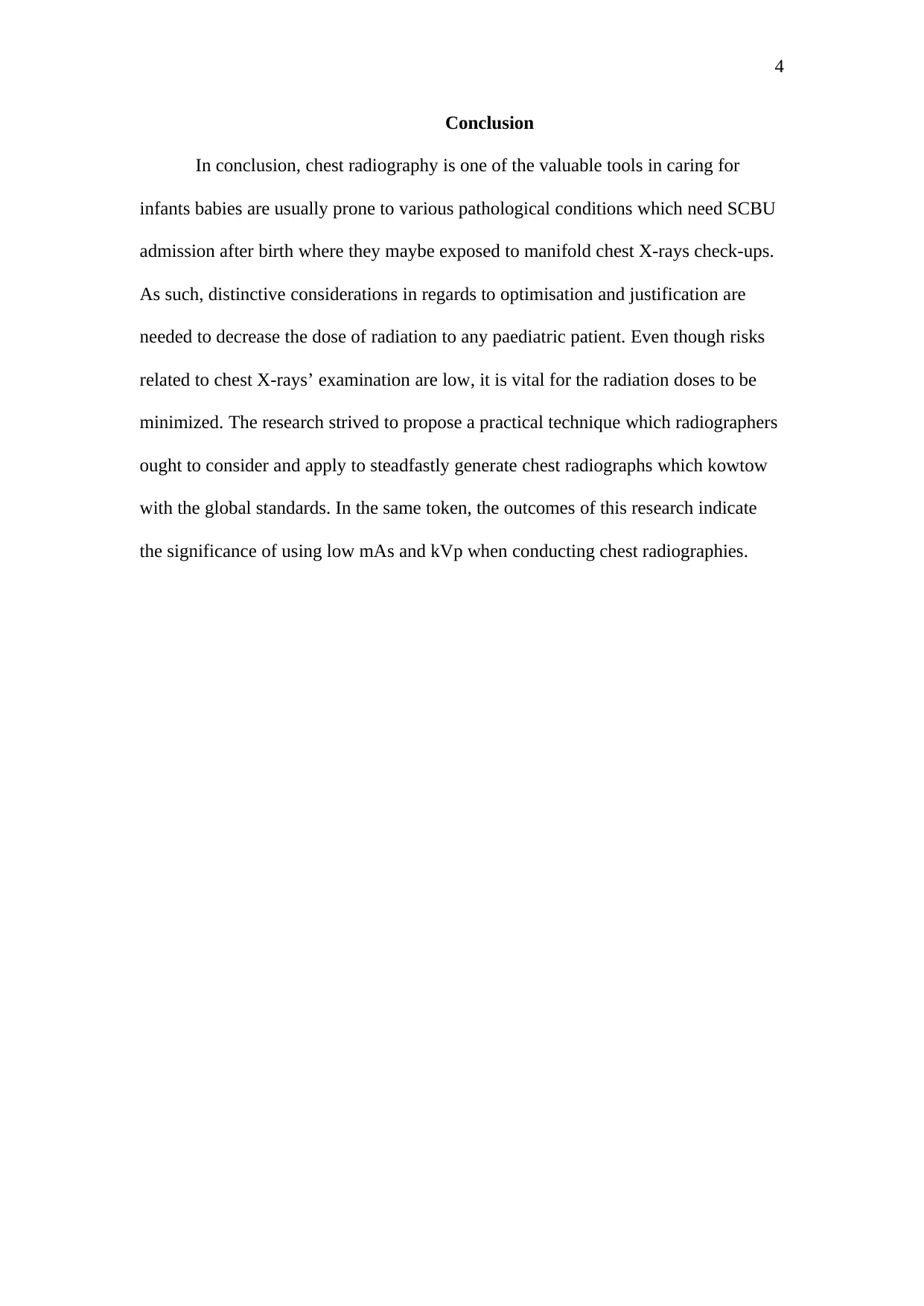The Effect of mAs and kVp on Image Quality in Neonatal Chest X-rays
VerifiedAdded on 2023/06/11
|4
|820
|269
Report
AI Summary
This research investigates the effect of altering mAs and kVp on image quality (IQ) in neonatal chest radiographs, specifically focusing on pneumothorax visibility and Dose Area Product (DAP). The study found that changing exposure factors impacts both image quality and DAP, with trends showing a combination of positive and negative correlations. Lower mAs values are recommended to maintain optimal IQ while minimizing radiation exposure, aligning with the ALARA principle. The report acknowledges limitations, including the single experiment run and limited number of observers, suggesting future research to include repeated experiments and more observers for enhanced data analysis. It concludes that while chest radiography is valuable for infant care, careful consideration of optimization and justification is crucial to minimize radiation doses, advocating for the use of low mAs and kVp in clinical practice. Desklib offers similar solved assignments for students.
1 out of 4








![[object Object]](/_next/static/media/star-bottom.7253800d.svg)